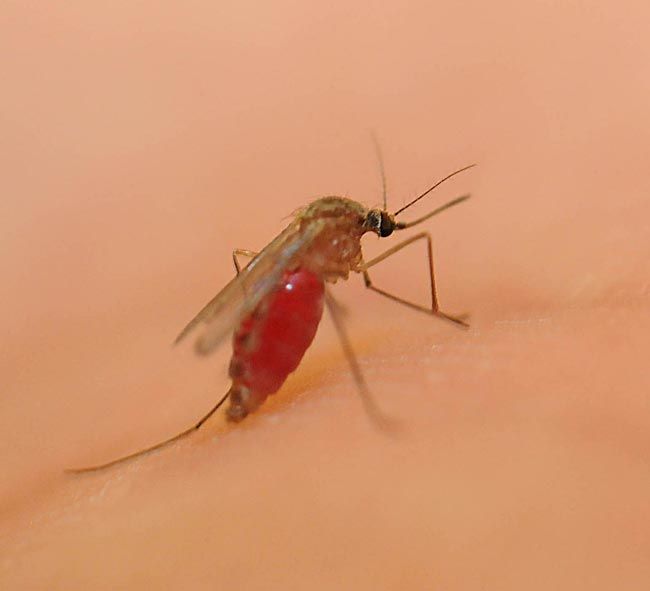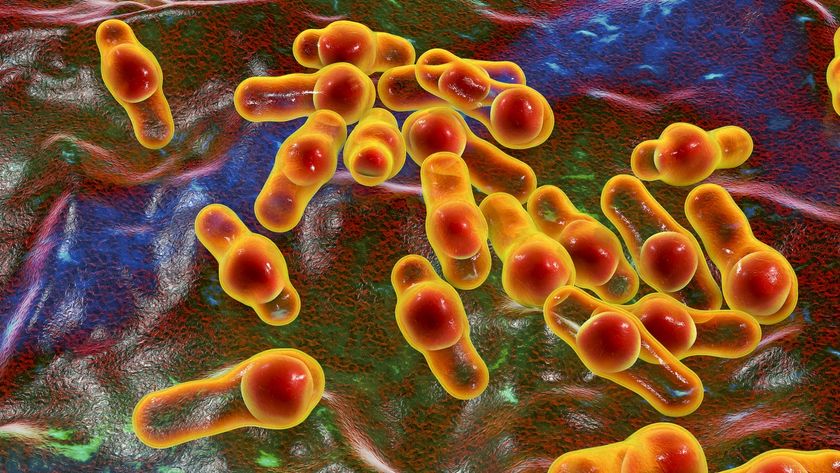New Potential Malaria Treatment Identified

A newly identified compound kills the malaria parasite well before it creates major health problems within an infected person, a new study finds. It might one day serve as a new drug to treat the infectious disease.
Malaria is responsible for nearly 1 million deaths each year, mostly among children in sub-Saharan Africa, according to the Centers for Disease Control and Prevention. New treatments for malaria are urgently needed because the current class of drugs use to treat the disease, known as artemisinins, are becoming less effective as the parasite develops resistance to them.
Experiments on human cells and in mice show the new drug has several advantages over artemisinins, including that it works more quickly and is believed to act in a different way, the researchers say. It also is quite potent (a small dose goes a long way), does not appear to be toxic to human cells and it could theoretically be given as an oral pill.
The researchers also identified a possible way that malaria parasites could develop resistance to this compound by exposing the parasites to non-lethal doses of the drug. This information is helpful because, if the drug were used to treat people, it would allow scientists to quickly detect drug-resistant parasites.
However, the researchers note that the compound is still in its earliest stages of development and has yet to be tested in clinical trials, a process during which "much can go wrong," said study author Elizabeth Winzeler, a researcher at The Scripps Research Institute in La Jolla, Calif.
"If the compound eventually appears efficacious and safe in clinical studies, the study may lead to new ways to treat malaria," Winzeler told MyHealthNewsDaily. "If it faces hurdles in clinical trials, we may still have learned about how parasites escape drug pressure," she said.
The study will be published in the Sept. 3 issue of the journal Science.
Sign up for the Live Science daily newsletter now
Get the world’s most fascinating discoveries delivered straight to your inbox.
Finding new drugs
Malaria is a disease caused by a parasite and transmitted by a mosquito. The two parasite species that cause most malaria in humans are Plasmodium falciparum and Plasmodium vivax.
When a person becomes infected with malaria, the parasite multiplies inside red blood cells and liver cells and causes, fever, chills, anemia, vomiting and convulsions. The disease can lead to kidney failure, permanent neurological damage, coma and death.
While malaria has been eliminated from many countries, it remains endemic in certain parts of the world, including Africa and parts of Asia. In recent years, the parasite appears to be developing resistance to the current medications.
To find possible new drug candidates for malaria, Winzeler and her colleagues screened 12,000 compounds for their activity against parasite-infected human red blood cells. They looked for compounds that were effective at killing parasites already known to be resistant to multiple drugs and for compounds that weren't toxic to the human cells. Their search turned up one compound, known as NITD609, which had never been shown before to have anti-malarial activity.
In a test, a small dose of NITD609 cured three out of six mice it was given to, and a larger dose cured all five mice infected with a malaria parasite that it was given to. Normally, mice with the disease live less than a week, Winzeler said.
The particular screening process the researchers used is based on an older method for finding drugs, according to Timothy Wells, of the Medicines for Malaria Venture, a nonprofit organization that helped fund the study. Wells commented on the work in a separate article in Science.
Newer methods focus on first identifying genetic targets for drugs, and then figuring out which compound to use to target these genes or gene products.
With the older method that Winzeler and colleagues used, researchers look to see whether or not a compound works and killing the parasite, and then go and find out how it accomplishes this.
This method is advantageous because "In a sense you're exploring all possible targets, you're not biasing your search by saying 'I want to look for something that inhibits this,'" said Jon Clardy, a researcher at Harvard Medical School who studies ways to identify new therapies for infectious diseases and was not involved in the current study. "I think it's just marvelous piece of work," he added.
This method also has the advantage of identifying compounds that work to kill the parasite in more than one way.
How does it work?
The researchers know NITD609 prevents the parasite from making proteins, a process known as protein synthesis. However, the making of proteins is something the parasite does later during an inection, and there could be toher ways the drug works that are actually affecting the parasite earlier.
"The compound could be giving the parasite a "heart attack," so to speak. Shortly after you have a heart attack protein biosynthesis will stop," Winzeler said.
Earlier on, the compound might prevent the parasite from making a protein that is involved in transporting substances across cell membranes, an essential process the parasite cannot live without.
If NITD609 becomes a drug for malaria, it might be used in combination with other drugs, Clardy said. Many in the field believe there is no "magic bullet for malaria," he said. "I think they believe that every new molecule that comes along will become part of combination therapy, and that sooner or later every molecule that’s introduced, the parasite will develop resistance."
The current study was collaboration between The Scripps Research Institute, the Swiss Tropical Institute, the Genomics Institute of the Novartis Research Foundation and the Novartis Institute for Tropical Diseases. It was funded by the National Institutes of Health, the Wellcome Trust and the pharmaceutical company Novartis, among others.
This article was provided by MyHealthNewsDaily, a sister site to Live Science.

Rachael is a Live Science contributor, and was a former channel editor and senior writer for Live Science between 2010 and 2022. She has a master's degree in journalism from New York University's Science, Health and Environmental Reporting Program. She also holds a B.S. in molecular biology and an M.S. in biology from the University of California, San Diego. Her work has appeared in Scienceline, The Washington Post and Scientific American.












